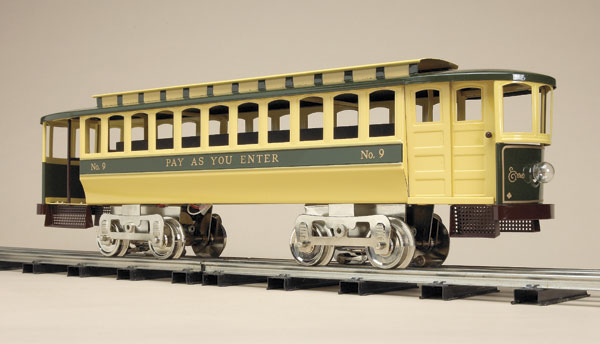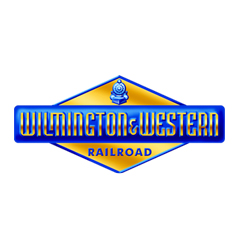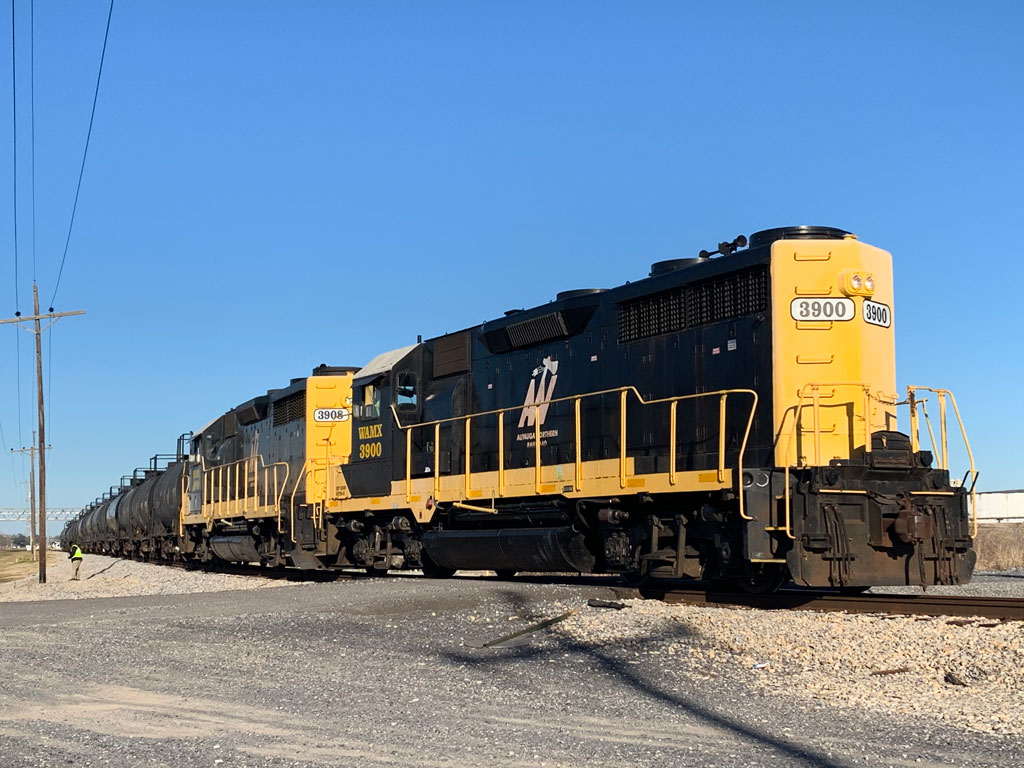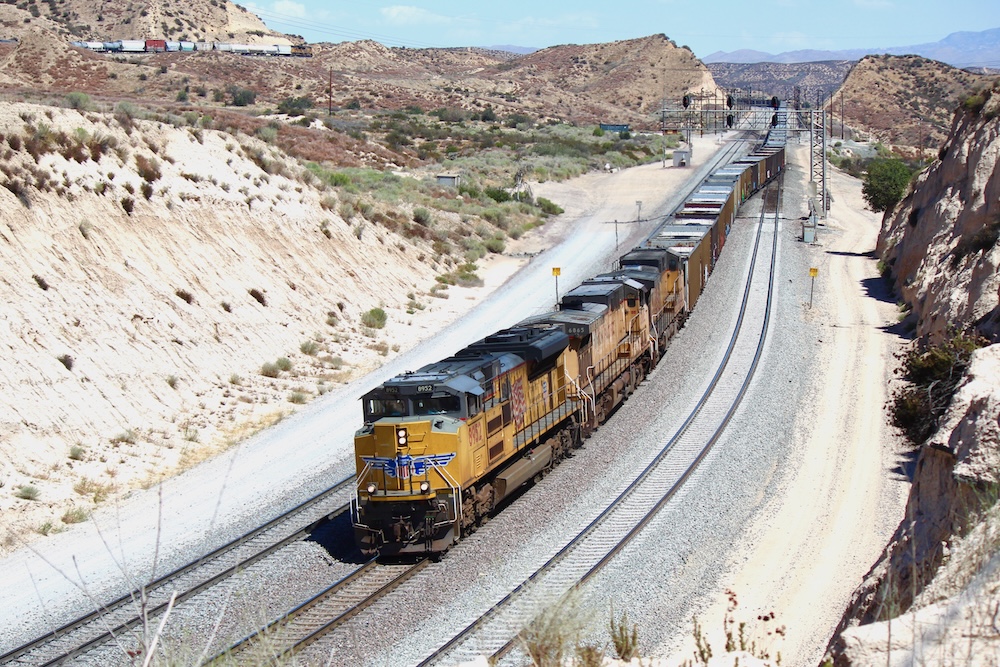Lionel first produced its no. 9 trolley way back in 1909, just one year after two fellows named Orville and Wilbur were granted a patent for a flying machine. The no. 9 trolley roughly models a streetcar of the time with closed platform ends, a headlight, and a clerestory roof.
According to Greenberg’s Guide to Lionel Trains 1901-1942, Vol. 1, the no. 9 trolley is the same as Lionel’s no. 8 trolley, but with two motors. MTH’s reproduction is of the no. 9 “Type B” trolley with 11 windows per side, which MTH reports was made starting in 1910. The “B” variation, at about 20 inches in length, was the largest trolley Lionel ever built.
The model
Out of the box, MTH’s trolley seems so basic, but then so was everything else in 1909. The body and roof are fabricated from stamped sheet metal. Ornamentation is minimal, although the stamping includes details, such as window frames, door panels, and horizontal trim along the trolley’s belt line. There are perforated steps at each end of the trolley and passenger handrails inside each doorway, as found on the original.
Lionel’s no. 9 trolley was soldered together. The MTH reproduction uses both tab-and-slot construction and small screws and nuts (a purist might balk at the use of Phillips head screws, which didn’t exist until the 1930s).
Our sample trolley was painted in a pleasing blend of green and creme, although there was a bit of rough masking where the creme paint simulates the clerestory windows.
Inside the body, a black, pencil-box shaped shield runs the length of the trolley to cover the ProtoSound 2.0 circuit boards, battery, and related components.
Command control, speed control, and sounds in a pre-World War I trolley? You betcha! The trolley is what MTH calls a “contemporary” version, meaning it looks original on the outside but contains the electronics and motors of a 21st-century three-rail train.
In keeping with the spirit of the original two-motored no. 9 trolley, both of the trucks on the MTH trolley are powered. Can-style motors with flywheels are mounted north to south within each truck, and worms on the ends of the motor shafts drive gears on all four of the trolley’s axles.
A close look at the front motor also reveals a strobe tape and a tach reader for MTH’s speed-control feature.
On the test track
Our sample trolley ran well, although when we placed it on its back in a foam cradle on our test bench and powered the locomotive through alligator clips, we noted that one of the motors had a higher start voltage than the other. Given the nature of this trolley – no traction tires and nothing to pull but its own weight – the slightly out-of-sync motors didn’t matter, although they should start spinning at the same voltage threshold.
The trolley tracked fine through our Standard gauge setup and its O-72 curves, and it is designed to negotiate traditional O-42 Standard gauge curves. The trolley weighs more than you’d expect, tipping the scales at 6 pounds.
Top speed for the trolley is 77.8 scale mph, and thanks to speed control we recorded a low speed of 3.4 scale mph. Although not quite strong enough to pull a car or trailer, the drawbar pull measured 1 pound 3 ounces. Not bad for a lightweight motorized unit with no traction tires. We suspect the two can-style motors helped significantly.
Best of all are the trolley-stop sounds and the ability to automate the trolley’s movement.
As with many of MTH’s streetcars and subways, the no. 9 trolley offers numerous sound effects. Besides the whine of an electric motor, a bell, and a barking horn, a conductor calls out nine different stops, each with slightly different sounds as passengers embark and disembark.
At one stop children can be heard giggling, and at another vendors can be heard hawking hotdogs and newspapers. Throughout the stops, the mechanized sounds of a trolley can be heard in the background.
You can activate the sound sequences manually by holding down your transformer’s bell button for 2 seconds, then stopping the car and putting it into neutral with the power turned up.
After the last “passenger” boards, the car will start up again in forward, ready for the next stop.
Or you can program your trolley in what MTH calls the “learn” mode. Trolleys that have “learned” their stops will travel a specific distance on your layout, stop at a street announcement that you select, and proceed to the next stop, and so forth, all the way around your layout, entirely hands free. This automatic mode is explained in the trolley’s instruction manual.
According to the 2005 Greenberg’s Lionel Trains Pocket Price Guide, prices for original nos. 8 and 9 trolleys in so-so shape start at $3,000 and go up from there. I doubt if many of these trolleys see regular duty on Standard gauge layouts. At one-fifth the price, and with a sound system that will bring a smile to even a curmudgeon’s face, MTH’s no. 9 “Pay as you enter” trolley is a winner.














